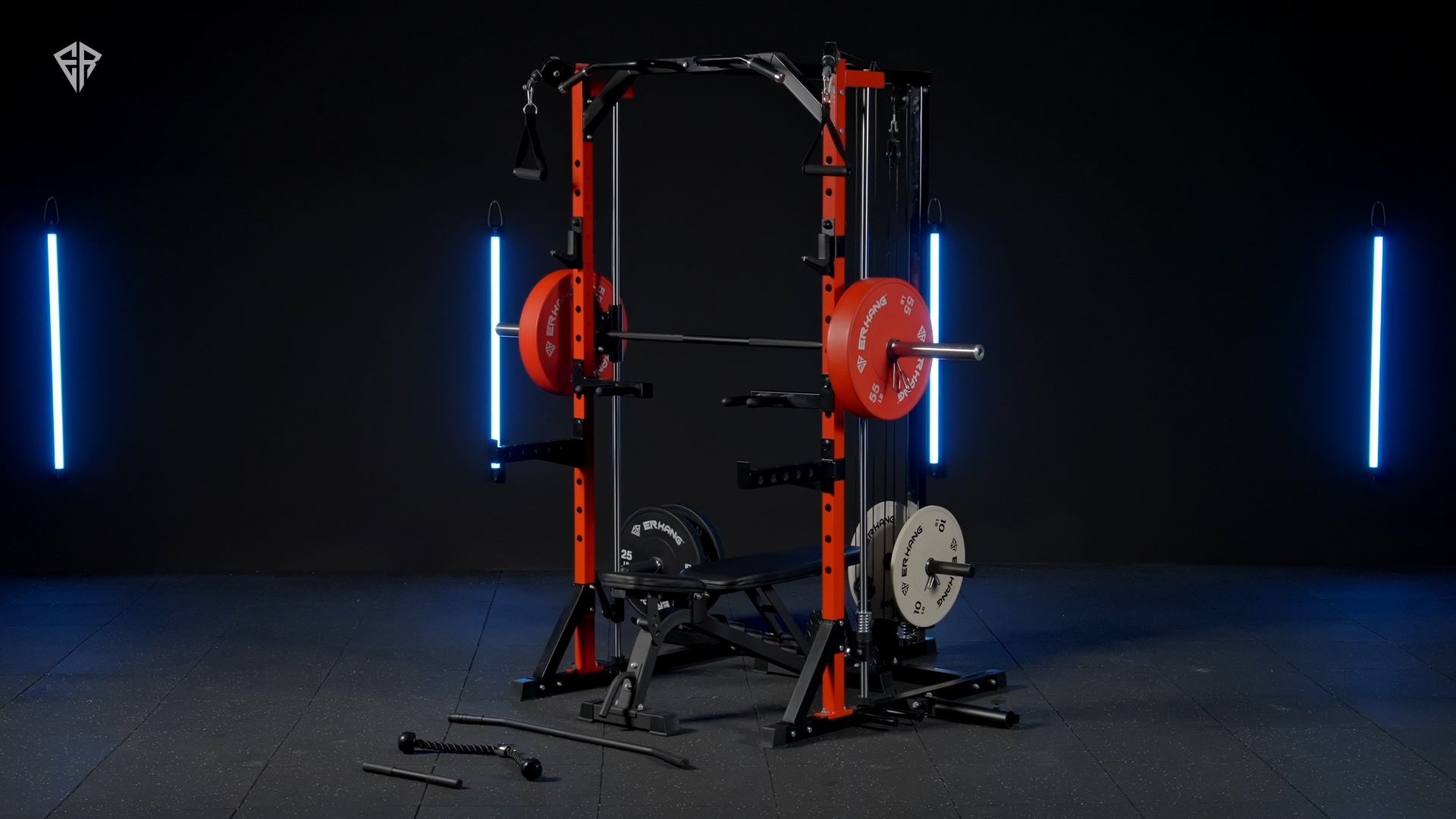In the realm of strength training, a power rack is an invaluable piece of equipment that can elevate your workout regimen to new heights. Whether you’re setting up a home gym or enhancing a commercial fitness space, understanding the benefits, features, and usage of a power rack can significantly impact your training outcomes. This comprehensive guide delves into everything you need to know about power racks, ensuring you make an informed decision for your fitness journey.
What is a Power Rack?
A power rack, also known as a squat cage or power cage, is a versatile and robust piece of gym equipment designed to support a wide range of strength training exercises. It typically consists of four vertical posts connected by horizontal bars, creating a sturdy frame. This structure allows for various attachments and accessories, making it adaptable for multiple exercises such as squats, bench presses, pull-ups, and more.
Benefits of Using a Power Rack
-
Safety: One of the primary advantages of a power rack is the enhanced safety it offers. With adjustable safety bars, you can perform heavy lifts without the need for a spotter, reducing the risk of injury.
-
Versatility: Power racks support a multitude of exercises, enabling a full-body workout using just one piece of equipment. From squats to bench presses, deadlifts, and pull-ups, the possibilities are endless.
-
Progressive Overload: With the ability to adjust the height of the bar and safety pins, you can progressively increase the weight and complexity of your workouts, promoting muscle growth and strength gains.
-
Stability: The solid construction of a power rack ensures stability during intense workouts, allowing you to lift heavier weights with confidence.
Key Features to Consider When Buying a Power Rack
-
Build Quality: Look for power racks made from high-gauge steel for maximum durability and stability. The quality of welding and overall construction is crucial for long-term use.
-
Weight Capacity: Ensure the power rack can handle the maximum weight you intend to lift. A higher weight capacity is generally better for advanced lifters.
-
Adjustability: The rack should offer multiple adjustment points for the barbell and safety bars to accommodate different exercises and user heights.
-
Attachments and Accessories: Consider racks that support various attachments like dip bars, lat pulldown stations, and landmine attachments for a more comprehensive workout experience.
-
Footprint: Measure the space where you plan to place the power rack to ensure it fits comfortably. Consider both the height and width, especially if you have a low ceiling or limited floor space.
Popular Power Rack Exercises
-
Squats: The primary exercise performed on a power rack, squats target the lower body muscles, including the quads, hamstrings, and glutes.
-
Bench Press: By adding a bench, you can perform bench presses, focusing on the chest, shoulders, and triceps.
-
Pull-Ups: Many power racks come with a built-in pull-up bar, allowing you to strengthen your back, biceps, and shoulders.
-
Deadlifts: Although not performed directly on the rack, the safety bars can be used for rack pulls, a variation of deadlifts that targets the lower back and hamstrings.
-
Overhead Press: Adjust the bar to shoulder height for performing overhead presses, which work the shoulders and triceps.
Maintenance Tips for Your Power Rack
-
Regular Inspection: Periodically check all bolts and nuts to ensure they are tight and secure. Inspect the frame for any signs of wear or damage.
-
Cleanliness: Keep the rack clean and free from dust and sweat. Wipe down the bars and frame after each use to prevent rust and maintain hygiene.
-
Lubrication: Apply a light lubricant to the moving parts, such as the adjustable safety bars and J-hooks, to ensure smooth operation.
-
Protective Padding: Consider using protective padding on the safety bars and J-hooks to prolong the lifespan of your barbell and reduce noise during workouts.
Conclusion
Investing in a power rack is a game-changer for anyone serious about strength training. Its versatility, safety features, and ability to support progressive overload make it an essential addition to any home or commercial gym. By considering the build quality, weight capacity, adjustability, and available attachments, you can select the perfect Gym-Mikolo power rack to meet your fitness goals. With proper maintenance, your power rack will provide a solid foundation for countless effective and safe workouts, helping you build strength and achieve your fitness objectives.

